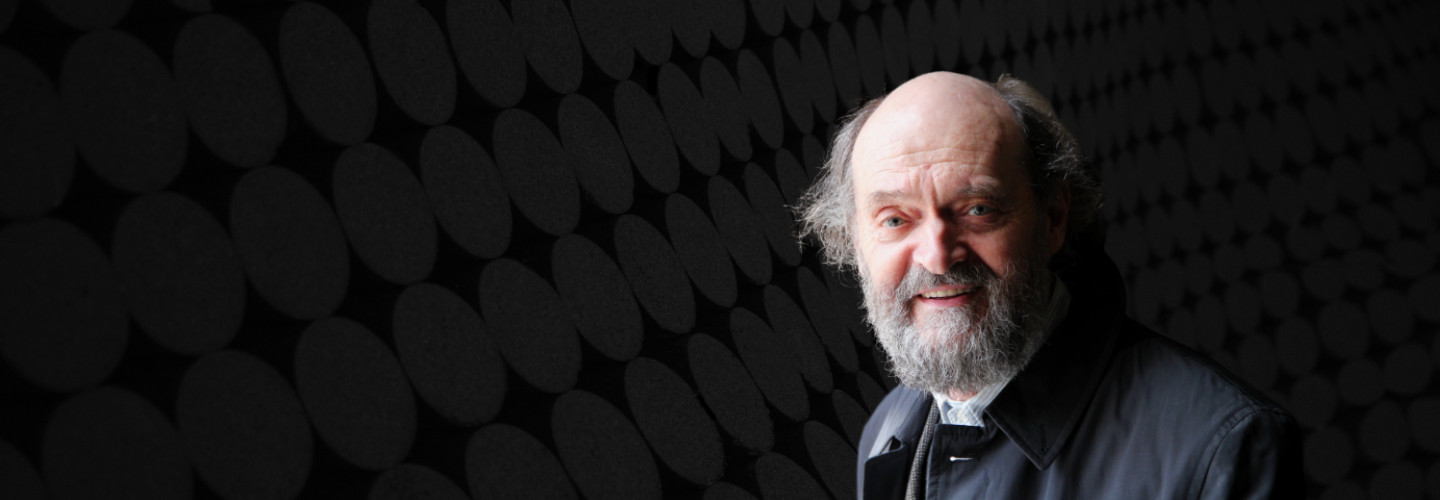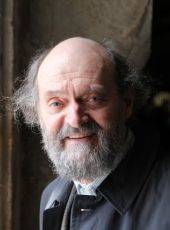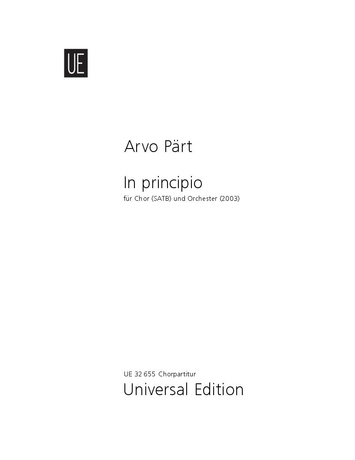

Arvo Pärt
In principio
Short instrumentation: 3 2 2 3 - 4 3 4 1 - timp, perc(3), str
Duration: 20'
Dedication: für Tõnu Kaljuste
Choir: SATB
Instrumentation details:
1st flute
2nd flute
3rd flute
1st oboe
2nd oboe
1st clarinet in Bb
2nd clarinet in Bb
1st bassoon
2nd bassoon
contrabassoon
1st horn in F
2nd horn in F
3rd horn in F
4th horn in F
1st trumpet in C
2nd trumpet in C
3rd trumpet in C
1st trombone
2nd trombone
3rd trombone
4th trombone
bass tuba
timpani
percussion(3)
violin I
violin II
viola
violoncello
contrabass
Pärt - In principio for mixed choir and orchestra
Printed/Digital
Translation, reprints and more

Arvo Pärt
Pärt: In principioOrchestration: for mixed choir (SATB) and orchestra
Type: Studienpartitur
Language: Lateinisch
Print-On-Demand

Arvo Pärt
Pärt: In principioOrchestration: for mixed choir (SATB) and orchestra
Type: Klavierauszug
Language: Lateinisch

Arvo Pärt
Pärt: In principioOrchestration: for mixed choir (SATB) and orchestra
Type: Dirigierpartitur
Language: Lateinisch

Arvo Pärt
Pärt: In principio for mixed choir (SATB) and orchestraOrchestration: for mixed choir (SATB) and orchestra
Type: Chorpartitur
Language: Lateinisch
Sample pages
Audio preview
Work introduction
In principio takes its words from the Gospel of John 1:1-14 and puts them into a five-movement form. This work, as in all of Pärt’s music, is governed by a strict formal design, with the clarity of the musical structure corresponding to that of the Latin text.
The first movement (vv. 1-5) and the fifth (v. 14) are limited to two opposing formal elements: a static, syllabically articulated A-minor chord, and its timbral and tonal opposite, a fanfare-like figure that expands with each new section, growing in loudness and returning to its beginning after traversing all twelve keys.
The second movement (vv. 6-8), devoted to John the Baptist, is conceived as a powerfully moving single-voice monody.
The central third movement (vv. 9-11) is not only the longest but the one whose message Pärt specially emphasised by repeating the words three times – something he had never done before in his vocal music. He evidently did so to send a signal directly to each and every one of us.
The fourth movement (vv. 12-13) seems to begin ex nihilo, growing slowly but with an ineluctable pulse in a mighty procession. The fifth movement (v. 14) constitutes, in combination with the first, the formal and expressive frame of the composition, albeit in mirror reflection.
If the chorus in the first movement statically pulsates while the orchestra proceeds dynamically through the circle of keys, these roles are reversed in the fifth movement. Thus, the expanding thrust given to the orchestra in the opening movement is now focused entirely on the text of the chorus.
Wolfgang Sander, translation by J. Bradford Robinson
